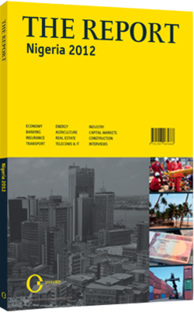OBG talks to Razia Khan, Head of Research for Africa, Standard Chartered

Interview: Razia Khan
What factors currently pose the biggest risks to Nigeria’s credit rating?
RAZIA KHAN: There are a number of issues to consider. First, some investors are concerned about the vulnerability of Nigeria’s economic future. Despite the level of achievement already attained, debate over the constitutionality of generating funds for the sovereign wealth fund undermine investor confidence in the country’s political commitment towards building a buffer for a potential collapse in the price of oil.
Although the budgeted oil price for 2012 is lower than that of 2011, the expected production yield remains high at 2.4m barrels per day. However, oil output has occasionally fallen below that level, meaning that Nigeria has had to dip into the excess crude account to augment the country’s budget revenue, which has an impact on savings and foreign exchange reserves.
Another issue is linked to the institutional capacity to oversee the management of oil revenue. The recent probe on the fuel subsidy has raised significant concerns about Nigeria’s effectiveness to curb leakages and prevent extra-budgetary spending. In addition to this is the delayed passage of the Petroleum Industry Bill, which is holding back substantial investments in the sector and risks further undermining production levels. Furthermore, the bill’s latest version has been short on detail, raising doubts about the commitment to address transparency and accountability issues.
Finally, Nigeria should focus on creating jobs. Despite the growth in non-oil sectors, which has been driven by agriculture, productivity levels have improved to a limited extent at best. These economic trends must be addressed if the headline growth rise is to translate into sound and sustainable macroeconomic bases.
How can financial regulators encourage participation by domestic banks in infrastructure projects?
KHAN: The key stumbling blocks have been related to the bankability of individual projects, and there are a number of factors feeding into this. The first one is cost recovery: the power sector is one example where many investment projects exist but the returns are affected by electricity tariffs that are well below market levels. Also, public-private partnerships in transportation infrastructure have only been explored to a limited extent due to issues that remain in cost recovery.
A second factor is the government’s weak track record of completing infrastructure projects. Rather than availability of capital, which is much less of an issue in Nigeria, we need to focus on problems related to implementation capacity. Likewise, I do not think that the deficient lending to small and medium-sized enterprises (SME) has anything to do with the willingness of banks to lend. The issue lies in the basic structure of the Nigerian economy, like infrastructure bottlenecks and their pressure on overheads. This makes credit lines to Nigerian SMEs much riskier than in comparable economies.
What measures need to be taken for Nigeria to consider loosening its monetary policy?
KHAN: I believe that despite tight controls on liquidity growth by the central bank, inflation is likely to edge up further, probably to 14% or 15%, before it starts falling. This is mainly due to the partial fuel price deregulation that we saw at the start of 2012.
Such a scenario makes it difficult to foresee rates being cut at this point in time. Also, the regulator is well aware that the practice of lowering rates to boost the economy is misguided. I believe the central bank recognises that interests rate cuts might invite greater currency weakness, adversely affecting inflation at a time when a number of tariffs, such as on food imports and electricity, are on the rise.
There is little guarantee that interests rates would result in a significant boost in bank lending. The reasons for the current lack of lending are more structural. To get to the point where interest rate cuts would affect lending would be hugely destabilising to the country’s macroeconomic health. So, for the time being, there is no clear-cut argument for monetary easing.
You have reached the limit of premium articles you can view for free.
Choose from the options below to purchase print or digital editions of our Reports. You can also purchase a website subscription giving you unlimited access to all of our Reports online for 12 months.
If you have already purchased this Report or have a website subscription, please login to continue.

